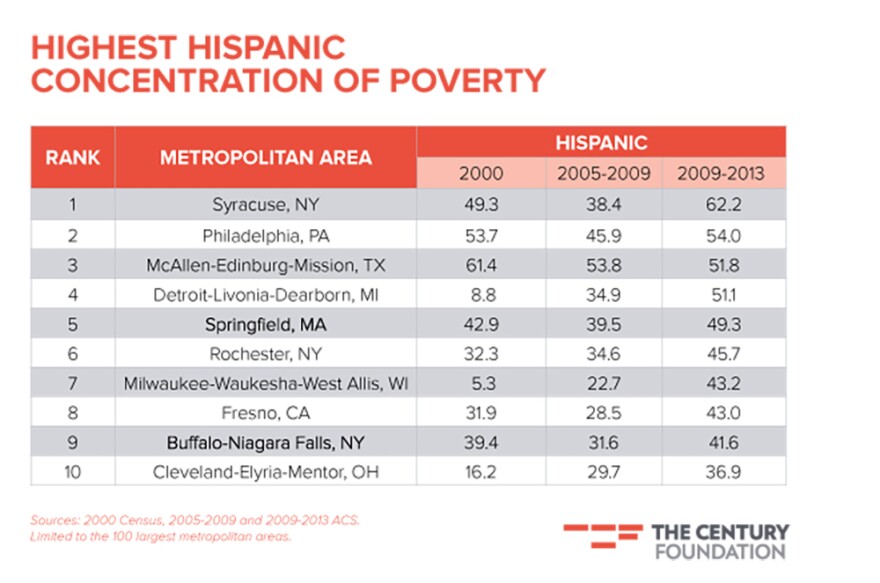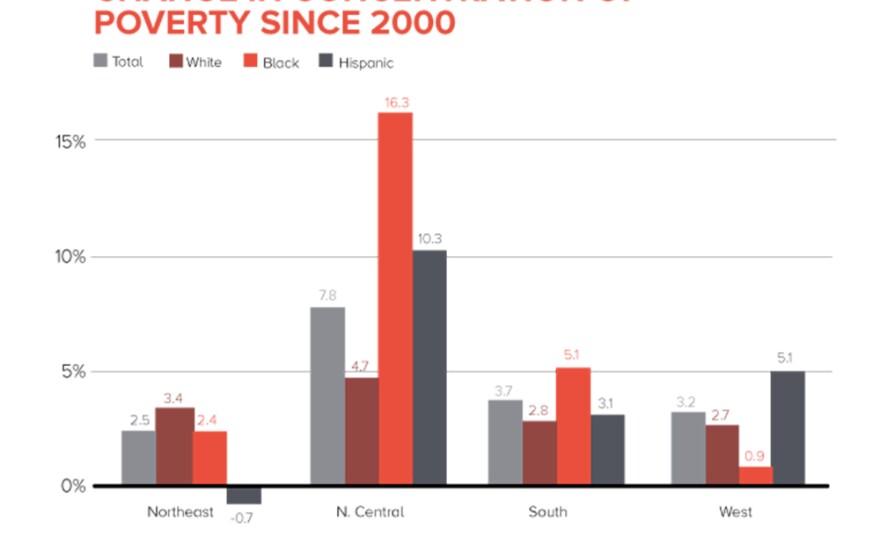A new analysis of census and other population data shows that the Milwaukee metropolitan area (Milwaukee-Waukesha-West Allis) is among the regions seeing the most dramatic increases in the number of Black and Latino people living in neighborhoods with high concentrations of poverty.
The report, titled Architecture of Segregation: Civil Unrest, the Concentration of Poverty, and Public Policy, was released by The Century Foundation.

The most recent data shows nearly 45% of African-Americans in the Milwaukee area live in high poverty neighborhoods, versus 39% in 2000. Milwaukee has the ninth highest concentration of black poverty in the United States. And it comes after a period when things had generally gotten better here, and around the country.

Even more dramatically, the report also found Metropolitan Milwaukee's concentration of Hispanic poverty grew from 5.3% in 2000 to 43.2% in 2013, placing seventh nationwide in that category.
The report's author, Paul Jargowsky, who is a professor a of public policy and the director of the Center for Urban Research and Urban Education at Rutgers University, says that significant progress was made in the 1990s in reducing the number of people living in concentrated high poverty areas. He attributes this to a strong economy, low unemployment and housing policies.
"We took down some of the gigantic high rise public housing projects that had become so problematic and moved more towards a scattered site housing approaches and housing vouchers that by their very nature are less concentrated than a single gigantic housing project," Jargowsky explains.
But since 2000, the U.S. has seen a very dramatic increase in the number of people living in high poverty areas in general. "It's gone up 91%," Jargowsky says. "A lot of that happened since the Great Recession, but it was happening even before that."
Jargowsky attributes much of the change to so-called "white flight." "We still have an issue in this country with the way metropolitan areas are developing, in that we have suburban jurisdictions growing very fast," he says. "Faster than is needed to accommodate population growth; and they're also using zoning and other tactics to essentially create economically segregated jurisdictions."
What ends up happening, Jargowsky says, is that the wealthiest people end up moving to these "economically segregated jurisdictions," the middle class people move to the suburbs which the wealthiest people left behind, and the poorest are left behind in the central cities and in declining suburbs on the margins of the central city.
He says that are some policies that attempt to increase the number of places low income people can live, but they represent only a drop in the bucket. "The overall pattern of exclusionary zoning and rampant development in the outer suburbs has continued," Jargowsky says. "There is sort of a general trend towards a more economically segregated pattern of housing and then on top of that...we have the ups and downs of the economy, so right now we have both of those things working in a negative way to create the situation that we see."
Jargowsky concludes that even though these policies aren't intended to racially segregate an area, that's effectively what's happening. He wrote in his report:
We are witnessing a nationwide return of concentrated poverty that is racial in nature, and that this expansion and continued existence of high-poverty ghettos and barrios is no accident. These neighborhoods are not the value-free outcome of the impartial workings of the housing market. Rather, in large measure, they are the inevitable and predictable consequences of deliberate policy choices.
"Low income people should have a choice to live in a variety of different areas," he says. "They shouldn't be restricted to central cities or inner-ring suburbs. There are lots of people who would like to buy a very modest house in a suburb with a good school district, but those kinds of houses are very hard to find when most of those school districts are in places where zoning requires a 3,000 square foot house."







